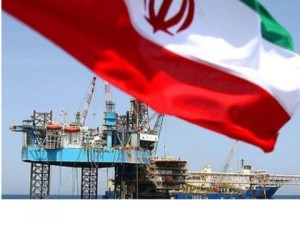
Over the past few months, further progress has been made on the lifting of Iranian sanctions in terms of legislation.
For example, first, the US Congress failed to block the Iran nuclear
deal reached in summer 2015 and second, the same deal has been approved
by the Iranian parliament, London broking house Gibson said in a report
On 18th October, US authorities approved conditional
sanctions waivers for Iran (known as Adoption Day). These waivers will
only take effect after Iran complies with its commitments and this is
verified by the IAEA (Implementation Day).
According to several senior US officials, the Implementation Day is at
the very least two months away; while most industry experts are of the
opinion that this is unlikely to happen before the first quarter of next
year, Gibson said.
If and when Iranian sanctions are lifted, it will have important implications for global oil markets.
At present, the world is awash with crude, following OPEC’s policy to
defend its market share, while at the same time, US crude oil production
is not falling fast enough to balance supply and demand, despite prices
remaining low. Finally, concerns are growing about the health of world
economy, leading to lower expectations for global oil demand growth next
year.
In these circumstances, if Iran is able to rapidly increase its
production and exports, this will only add more crude to an already
heavily oversupplied market, Gibson warned.
Undoubtedly, this year the overhang of crude oil has fuelled tanker
markets not only in terms of supporting trade, but also leading to
additional storage requirements and loading/discharge delays. Any
increase in Iranian exports will at the very least increasingly support a
tight supply/demand balance.
However, there are also concerns about the Iranian fleet, which will
become internationally operational and is likely to compete aggressively
in the conventional tanker market when sanctions are lifted.
Today, some 37 VLCCs, nine Suezmaxes and five Aframaxes are under
control of the National Iranian Tanker Co (NITC). However, about half of
this fleet is already employed, largely shipping Iranian crude to a
limited number of international buyers - although there is some scope
here for efficiency gains, such as faster speeds and reduced waiting
time.
The rest of NITC’s fleet is used for crude/condensate storage, with the
latest count at 20 units under its control and five by other owners,
Gibson said.
If the nuclear dispute is resolved, a number of VLCCs used for storage
will continue for operational/marketing reasons, as was the case prior
to sanctions. Only those tankers which will be released from storage
duties will be in position to provide an incremental boost to tanker
supply.
It could take some time for these ships to meet international standards
in terms of class and insurance. Furthermore, many units are likely to
require drydocking. On this basis, the process of ‘re-entry’ will be
gradual.
Finally, if Iran succeeds in rapidly increasing its production and in
significant volumes, this would provide additional demand for the NITC
fleet, limiting further the threat of competition to the international
tanker supply, Gibson concluded.
No comments:
Post a Comment